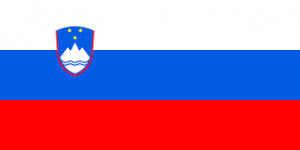Language/Slovenian/Grammar/How-to-Use-Be
Hi Slovenian learners! 😊
In this lesson, we will learn how to use "be" in Slovenian. This verb is essential to be able to form sentences, so let's dive in! Don't forget that to improve your Slovenian find native speakers and ask them any questions!
"Be" in Slovenian[edit | edit source]
"Be" is important in every language, and in Slovenian, it's not different. We use "biti" which is the infinitive form of the verb, to say that something exists, happens or is true.
Take a look at the following examples:
| Slovenian | Pronunciation | English |
|---|---|---|
| Sem | [sɛm] | I am |
| Si | [si] | You are |
| Je | [jɛ] | He/she/it is |
| Smo | [smɔ] | We are |
| Ste | [stɛ] | You (plural) are |
| So | [sɔ] | They are |
In Slovenian, the verb "biti" (be) is regularly used to form the present tense, but we can also use it to talk about the past, and even the future.
Let's take a look at some examples in the following tables:
| Slovenian | Pronunciation | English |
|---|---|---|
| Bil sem | [bɪl sɛm] | I was |
| Bil si | [bɪl si] | You were |
| Bil je | [bɪl jɛ] | He was |
| Bili smo | [bɪlɪ smɔ] | We were |
| Bili ste | [bɪlɪ stɛ] | You (plural) were |
| Bili so | [bɪlɪ sɔ] | They were |
Now let's take a look at examples for the future:
| Slovenian | Pronunciation | English |
|---|---|---|
| Bom | [bɔm] | I will be |
| Boš | [bɔʃ] | You will be |
| Bo | [bɔ] | He/she/it will be |
| Bomo | [bɔmɔ] | We will be |
| Boste | [bɔstɛ] | You (plural) will be |
| Bodo | [bɔdɔ] | They will be |
Now that you have learned about the present, past and future forms of "be," let's move on to some more complex aspects.
Slovenian Grammar with "Be"[edit | edit source]
Grammar is a tricky thing to get right in any language, and Slovenian is no exception. In this section, we will go through some aspects of Slovenian grammar that you need to know to use "be" correctly.
Gender and Number Agreement[edit | edit source]
Just like many other languages, Slovenian has a system of gender and number agreement, which means that the form of the verb changes depending on the gender and number of the subject.
For instance:
"Jaz sem učitelj" "I am a teacher" (masculine)
"Jaz sem učiteljica" "I am a teacher" (feminine)
"Midva sva učitelja" "We are teachers" (masculine, dual)
"Midva sva učiteljici" "We are teachers" (feminine, dual)
"Mi smo učitelji" "We are teachers" (masculine, plural)
"Mi smo učiteljice" "We are teachers" (feminine, plural)
Negation with "Be"[edit | edit source]
To form negative sentences with "be" in Slovenian, we add "ne" before the verb.
For example:
"Jaz nisem učitelj." "I am not a teacher."
"Ti nisi učiteljica." "You are not a teacher."
"On ni učenec." "He is not a student."
"Mi nismo učitelji." "We are not teachers."
Examples and Dialogue[edit | edit source]
Let's see some examples of sentences with "be" in context:
- Person 1: Kje si bil včeraj? (Where were you yesterday?)
- Person 2: Bil sem v službi. (I was at work.)
- Person 1: Kaj si? (What are you?)
- Person 2: Jaz sem študent. (I am a student.)
- Person 1: Kdo si ti? (Who are you?)
- Person 2: Jaz sem Ana. (I am Ana.)
- Person 1: Koga ne vidiš? (Whom can't you see?)
- Person 2: Ne vidim svojega brata. (I can't see my brother.)
- Person 1: Kaj boš postal, ko boš velik? (What will you become when you grow up?)
- Person 2: Postal bom zdravnik. (I will become a doctor.)
Conclusion[edit | edit source]
Congratulations! You have learned how to use "be" in Slovenian! Remember that practice is essential to learning a new language, so don't hesitate to use native speakers and ask questions on the Slovenian Grammar section of the website. And if you want to know more about the Slovenian language, go to the Slovenian page on Polyglot Club.
➡ If you have any questions, please ask them in the comments section below.
➡ Feel free to edit this wiki page if you think it can be improved. 😎
Now that you've completed this lesson, don't stop learning! Check out these related topics: Conjugation & Gender.
Other Lessons[edit | edit source]
Sources[edit | edit source]

